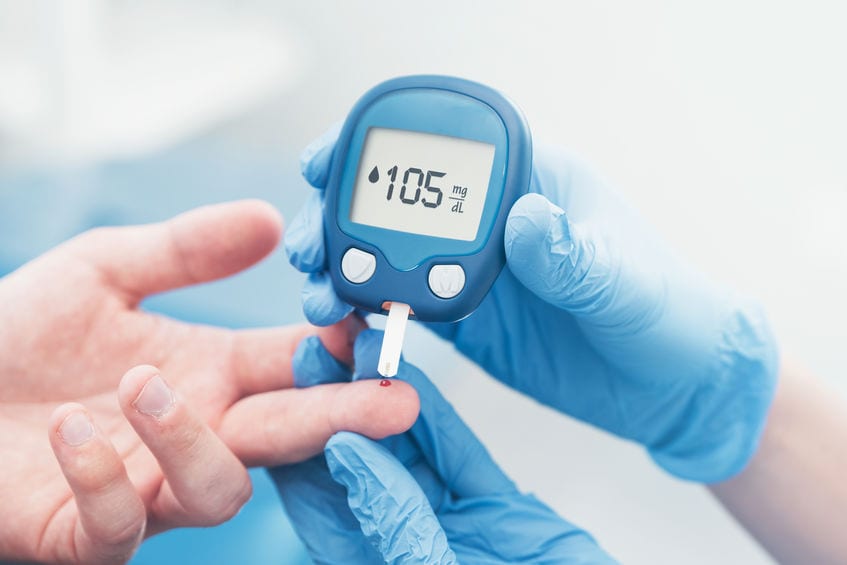What Are Antidiabetic Medications And How Do They Regulate Blood Sugar?

Antidiabetic medications are essential for individuals with diabetes to regulate their blood sugar levels effectively. This article aims to provide an overview of antidiabetic medications, their mechanisms of action, and how they contribute to the regulation of blood sugar levels.
The discussion will encompass the different types of antidiabetic medications available, their common side effects, and the importance of individualized treatment plans. Additionally, the article will explore combination therapies that may be used in conjunction with antidiabetic medications to enhance their effectiveness.
It is crucial to understand the potential risks and precautions associated with these medications and the importance of lifestyle modifications in managing diabetes. By examining the various aspects of antidiabetic medications, this article seeks to provide a comprehensive understanding of their role in regulating blood sugar levels and supporting overall diabetes management.
Key Takeaways
- Antidiabetic medications are essential for regulating blood sugar levels in individuals with diabetes.
- Different types of antidiabetic medications have their own mechanisms of action, such as insulin, metformin, sulfonylureas, and thiazolidinediones.
- Insulin sensitizers, such as metformin and thiazolidinediones, improve the body’s sensitivity to insulin and glucose uptake.
- Insulin secretagogues, including sulfonylureas and meglitinides, stimulate the release of insulin from pancreatic beta cells to regulate blood sugar levels.
Types of Antidiabetic Medications
A variety of antidiabetic medications exist, each with its own mechanism of action for regulating blood sugar levels.
One common type of antidiabetic medication is insulin, which is essential for people with type 1 diabetes. Insulin works by allowing glucose to enter cells, thus lowering blood sugar levels.
Another type of medication is metformin, which is typically prescribed to individuals with type 2 diabetes. Metformin decreases glucose production in the liver and improves insulin sensitivity in the body.
Sulfonylureas, such as glipizide and glyburide, stimulate the pancreas to produce more insulin.
Additionally, medications such as thiazolidinediones enhance insulin sensitivity and reduce glucose production.
It is important to note that while these medications can effectively regulate blood sugar levels, they also carry potential risks and side effects, such as hypoglycemia and gastrointestinal disturbances.
Therefore, it is crucial for healthcare professionals to carefully monitor and adjust these medications to ensure optimal management of blood sugar levels.
Mechanisms of Action
This paragraph will discuss the mechanisms of action of three types of antidiabetic medications: insulin sensitizers, insulin secretagogues, and alpha-glucosidase inhibitors.
Insulin sensitizers work by enhancing the body’s sensitivity to insulin, allowing for better glucose uptake and utilization.
Insulin secretagogues stimulate the release of insulin from pancreatic beta cells, increasing insulin levels in the blood.
Alpha-glucosidase inhibitors work by inhibiting the enzymes that break down carbohydrates, slowing down the absorption of glucose from the digestive tract.
Insulin Sensitizers
Insulin sensitizers, such as metformin and thiazolidinediones, play a crucial role in regulating blood sugar levels by increasing the body’s sensitivity to insulin and enhancing glucose uptake in peripheral tissues.
Metformin, commonly prescribed as the first-line treatment for type 2 diabetes, works by reducing glucose production in the liver and improving insulin sensitivity in muscle cells.
Thiazolidinediones, on the other hand, primarily target adipose tissue to enhance insulin action.
These medications are effective in increasing insulin sensitivity, allowing for better control of blood sugar levels.
Additionally, insulin sensitizers have shown benefits in weight management by promoting weight loss or preventing weight gain. They can reduce appetite and inhibit fat accumulation, contributing to improved glycemic control.
Overall, insulin sensitizers offer an important therapeutic strategy for managing diabetes and its associated complications.
Insulin Secretagogues
One of the pharmacological approaches to managing diabetes involves the use of insulin secretagogues, which act by stimulating the release of insulin from pancreatic beta cells. Insulin secretagogues are a class of antidiabetic medications that work by increasing insulin secretion, thereby helping to regulate blood sugar levels in individuals with diabetes. These medications are primarily used in type 2 diabetes, where there may be a deficiency in insulin secretion or a decreased response to insulin. By enhancing the release of insulin, insulin secretagogues promote glucose metabolism improvement, as insulin is responsible for facilitating the uptake of glucose into cells for energy production. This helps to lower blood sugar levels and maintain glycemic control. There are different types of insulin secretagogues, including sulfonylureas and meglitinides, each with their own mechanism of action and specific benefits.
| Insulin Secretagogue | Mechanism of Action |
|---|---|
| Sulfonylureas | Stimulate pancreatic beta cells to release insulin by closing ATP-sensitive potassium channels. |
| Meglitinides | Bind to ATP-sensitive potassium channels, resulting in insulin release through a different mechanism than sulfonylureas. |
Alpha-Glucosidase Inhibitors
Alpha-glucosidase inhibitors are a class of drugs that function by inhibiting the action of enzymes in the small intestine, leading to a delayed breakdown and absorption of carbohydrates, ultimately resulting in better glycemic control for individuals with diabetes.
By slowing down the digestion of carbohydrates, these medications help to prevent the rapid rise in blood sugar levels that typically occurs after meals. This can be particularly beneficial for people with type 2 diabetes who struggle with postprandial hyperglycemia.
However, it is important to note that alpha-glucosidase inhibitors can have drug interactions with other medications. For example, they may interact with certain antacids, digestive enzyme supplements, or other medications that affect carbohydrate metabolism.
Additionally, these inhibitors may cause gastrointestinal side effects, such as flatulence, bloating, and diarrhea. While generally well-tolerated, individuals with inflammatory bowel disease or other gastrointestinal disorders should use caution when taking alpha-glucosidase inhibitors.
As with any medication, it is important to discuss potential risks and benefits with a healthcare provider before starting treatment.
Regulation of Blood Sugar Levels
This discussion will focus on three key points related to the regulation of blood sugar levels:
- Increasing insulin sensitivity refers to the ability of cells to respond to insulin and effectively utilize glucose for energy.
- Stimulating insulin production involves promoting the secretion of insulin by the pancreatic beta cells, which helps to lower blood sugar levels.
- Reducing glucose absorption aims to limit the amount of glucose entering the bloodstream from the digestive system, thereby helping to maintain stable blood sugar levels.
Increasing Insulin Sensitivity
Increasing insulin sensitivity is a crucial aspect of antidiabetic medications as it plays a pivotal role in regulating blood sugar levels, providing hope and optimism for individuals struggling with diabetes.
Insulin resistance, a characteristic of type 2 diabetes, occurs when the body’s cells become less responsive to the effects of insulin. By increasing insulin sensitivity, antidiabetic medications help to manage insulin resistance and improve glucose uptake by the cells. This allows the body to use insulin more effectively and lowers blood sugar levels.
Various antidiabetic medications work through different mechanisms to increase insulin sensitivity. Some medications, such as metformin, activate an enzyme called AMP-activated protein kinase (AMPK), which enhances insulin sensitivity. Others, like thiazolidinediones, activate peroxisome proliferator-activated receptor-gamma (PPAR-γ), a nuclear receptor that regulates genes involved in glucose metabolism and insulin sensitivity.
Overall, increasing insulin sensitivity through antidiabetic medications is an important strategy to regulate blood sugar and improve diabetes management.
Stimulating Insulin Production
To further address the management of diabetes, another approach involves stimulating insulin production. This can be achieved through the use of antidiabetic medications that aim to increase insulin secretion from pancreatic beta cells.
By promoting the production of insulin, these medications help to regulate blood sugar levels in individuals with diabetes. One such class of medications is sulfonylureas, which work by binding to specific receptors on beta cells, triggering the release of insulin.
Additionally, incretin-based therapies, such as glucagon-like peptide-1 (GLP-1) receptor agonists, enhance insulin secretion while also improving glucose metabolism. These medications stimulate the release of insulin in response to rising blood sugar levels, thereby helping to maintain glycemic control.
By increasing insulin secretion and improving glucose metabolism, these antidiabetic medications play a crucial role in the management of diabetes.
Reducing Glucose Absorption
Reducing the absorption of glucose is a significant strategy in managing diabetes, as it helps control blood sugar levels and promotes overall well-being in individuals with the condition. One way to achieve this is by reducing carbohydrate intake, as carbohydrates are the primary source of glucose in the body. By limiting the amount of carbohydrates consumed, less glucose enters the bloodstream, resulting in lower blood sugar levels. Additionally, alternative treatment options such as alpha-glucosidase inhibitors can be used to slow down the digestion and absorption of carbohydrates in the intestines, further reducing glucose absorption. These medications work by inhibiting the enzymes responsible for breaking down complex carbohydrates into simple sugars. Incorporating these strategies into the management of diabetes can be effective in regulating blood sugar levels and improving the overall health of individuals with the condition.
| Strategy to Reduce Glucose Absorption | Emotional Response |
|---|---|
| Reducing carbohydrate intake | Control |
| Alpha-glucosidase inhibitors | Hope |
Common Side Effects
This paragraph will discuss the common side effects of antidiabetic medications, specifically focusing on hypoglycemia, weight gain, and gastrointestinal issues.
Hypoglycemia, or low blood sugar, is a potential side effect of these medications and can cause symptoms such as dizziness, confusion, and sweating.
Weight gain is another common side effect, which can be attributed to various factors such as increased appetite and fluid retention.
Lastly, gastrointestinal issues such as nausea, vomiting, and diarrhea may occur as a result of these medications.
Hypoglycemia
Hypoglycemia, a condition characterized by dangerously low blood sugar levels, can be managed through the use of antidiabetic medications which work to restore the delicate balance of glucose in the body. These medications play a crucial role in hypoglycemia management by preventing and treating episodes of low blood sugar.
Symptoms of hypoglycemia include confusion, dizziness, shakiness, sweating, and weakness. Antidiabetic medications help regulate blood sugar levels by stimulating the release of insulin from the pancreas or by increasing the body’s sensitivity to insulin. They can also slow down the absorption of glucose from the intestines or decrease the production of glucose in the liver.
Additionally, antidiabetic medications may enhance the storage of glucose in the muscles and liver, which can help prevent hypoglycemia. It is important for individuals with diabetes to closely monitor their blood sugar levels and work with their healthcare provider to find the right antidiabetic medication regimen to effectively manage hypoglycemia.
Weight Gain
Weight gain is a potential concern for individuals with diabetes who are managing their blood sugar levels through the use of antidiabetic medications. Many antidiabetic medications have been associated with weight gain, which can further complicate diabetes management and increase the risk of developing other health conditions. However, it is important to note that not all antidiabetic medications have the same effect on weight.
Some medications, such as insulin and sulfonylureas, are more likely to cause weight gain than others like metformin and GLP-1 receptor agonists. Weight loss is often recommended for individuals with diabetes to improve glycemic control and overall health.
Regular exercise is an important component of weight loss and has been shown to have numerous benefits for individuals with diabetes, including improved insulin sensitivity and blood sugar regulation. Therefore, incorporating exercise into the diabetes management plan can help mitigate the potential weight gain associated with antidiabetic medications.
Gastrointestinal Issues
Gastrointestinal issues can pose challenges for individuals managing diabetes, as these issues can impact the absorption and digestion of nutrients essential for maintaining stable blood sugar levels.
Some common gastrointestinal discomfort experienced by people with diabetes include bloating, gas, constipation, and diarrhea. These symptoms can be attributed to various factors, including diabetic neuropathy, autonomic neuropathy, and certain antidiabetic medications.
It is crucial for individuals with diabetes to address these issues promptly to prevent further complications. One approach is through dietary modifications, such as consuming smaller, more frequent meals and avoiding foods that are known to cause gastrointestinal distress. Additionally, individuals may benefit from incorporating fiber-rich foods, probiotics, and staying adequately hydrated.
Consulting with a healthcare professional is essential to determine the underlying cause of gastrointestinal issues and develop an appropriate treatment plan.
Individualized Treatment Plans
Individualized treatment plans for antidiabetic medications take into account various factors such as the patient’s medical history, lifestyle, and blood glucose levels to ensure optimal regulation of blood sugar. By tailoring the treatment plan to the specific needs of each patient, individualized dosing can be achieved, resulting in better outcomes and improved patient satisfaction.
To create a personalized care approach, healthcare providers consider the patient’s medical history, including any comorbidities or previous adverse reactions to antidiabetic medications. Lifestyle factors such as diet, exercise habits, and stress levels are also taken into account, as they can greatly impact blood sugar levels.
Additionally, regular monitoring of blood glucose levels allows for adjustments to the treatment plan as needed.
A well-designed individualized treatment plan ensures that the patient receives the most effective antidiabetic medication at the appropriate dose, leading to optimal blood sugar control and minimizing the risk of complications.
Combination Therapies
Combination therapies involve the use of multiple medications to treat diabetes.
This approach aims to enhance the effectiveness of treatment by targeting different pathways involved in regulating blood sugar levels.
Additionally, combination therapies can help minimize side effects by allowing for lower doses of each medication to be used.
Using Multiple Medications
Multiple antidiabetic medications can be used together to effectively regulate blood sugar levels, providing patients with a sense of hope and control over their diabetes management. The use of combination therapies allows for individualized dosing, tailoring the treatment to the specific needs of each patient. This approach takes into account various factors such as the severity of diabetes, the patient’s response to different medications, and any existing comorbidities.
By combining different antidiabetic medications, healthcare providers can target multiple pathways involved in blood sugar regulation, leading to better glycemic control. Additionally, using multiple medications can help address issues related to treatment adherence. Some patients may struggle with consistently taking a single medication, but using a combination therapy can increase treatment adherence by simplifying the regimen and reducing the number of pills that need to be taken.
Overall, the use of multiple antidiabetic medications offers a promising approach to effectively manage blood sugar levels and improve patient outcomes.
Enhancing Treatment Effectiveness
To enhance treatment effectiveness in managing diabetes, it is crucial to address the challenges associated with using multiple antidiabetic medications. While combining different medications can optimize blood sugar control, it can also increase the risk of adverse effects and medication interactions.
To mitigate these challenges, healthcare professionals play a pivotal role in educating patients about the importance of treatment adherence and providing support to overcome barriers. Enhancing treatment adherence involves empowering patients to understand the benefits and potential risks of their medications, establishing a well-structured treatment plan, and addressing any concerns or misconceptions.
Additionally, considering alternative therapies, such as lifestyle modifications, including healthy eating, regular exercise, and stress management techniques, can complement pharmacological treatments and improve overall treatment effectiveness.
Minimizing Side Effects
In order to optimize the management of diabetes, it is imperative to address the potential side effects associated with the utilization of various antidiabetic medications. While these medications play a crucial role in regulating blood sugar levels, they can also give rise to unwanted adverse effects. Thus, minimizing side effects is essential to enhance treatment effectiveness and patient compliance. One approach to minimize side effects is through individualized dosing, where the medication dosage is tailored to the specific needs and characteristics of each patient. This ensures that the medication is effective in controlling blood sugar levels while minimizing the risk of side effects. Additionally, exploring alternative therapies can also be beneficial. These may include lifestyle modifications, such as dietary changes and exercise, or the use of complementary and alternative medicines. By considering individualized dosing and alternative therapies, healthcare providers can minimize the occurrence of side effects and optimize the overall management of diabetes.
| Side Effects | Individualized Dosing | Alternative Therapies |
|---|---|---|
| Hypoglycemia | Tailored medication dosage based on patient characteristics | Lifestyle modifications, such as dietary changes and exercise |
| Gastrointestinal discomfort | Adjusting medication timing or switching to a different medication | Complementary and alternative medicines, such as herbal supplements |
| Weight gain | Prescribing medications with lower risk of weight gain | Behavioral interventions, such as counseling on diet and physical activity |
Table 1: Strategies to minimize side effects associated with antidiabetic medications.
Potential Risks and Precautions
This paragraph will discuss the potential risks and precautions associated with antidiabetic medications.
One potential risk is the occurrence of allergic reactions, which can range from mild to severe and may require immediate medical attention.
Additionally, drug interactions should be carefully considered as certain medications can interact with antidiabetic drugs and affect their effectiveness or lead to adverse effects.
Lastly, it is important to monitor kidney and liver function in patients taking antidiabetic medications, as these organs play a crucial role in drug metabolism and elimination.
Allergic Reactions
Allergic reactions to antidiabetic medications can lead to severe complications and require immediate medical attention. It is crucial for healthcare providers and patients to be aware of the potential risks associated with these medications and to follow management guidelines to minimize the chances of an allergic reaction.
Here are three important points to consider:
- Symptoms: Allergic reactions may manifest as skin rashes, hives, itching, swelling, or difficulty breathing. It is essential to recognize these symptoms promptly and seek medical help.
- Treatment: If an allergic reaction occurs, the antidiabetic medication should be discontinued immediately. The individual may require antihistamines, corticosteroids, or, in severe cases, emergency medical intervention such as epinephrine.
- Management guidelines: Healthcare providers should carefully assess patients for any history of drug allergies or hypersensitivity before prescribing antidiabetic medications. Regular monitoring and communication between patients and healthcare providers can help identify and manage potential allergic reactions effectively.
By understanding and adhering to potential treatment and management guidelines, healthcare professionals and patients can work together to minimize the risks associated with allergic reactions to antidiabetic medications.
Drug Interactions
Drug interactions can have serious consequences and it is crucial for healthcare providers and patients to be knowledgeable about the potential risks associated with combining different medications.
Drug interactions occur when two or more medications interact with each other, altering their effectiveness or causing harmful side effects.
For antidiabetic medications, drug interactions can occur with other medications, herbal supplements, or even certain foods. These interactions can lead to either an increase or decrease in the blood sugar-lowering effects of antidiabetic medications, potentially resulting in poor glycemic control.
To prevent adverse drug interactions, healthcare providers must carefully review a patient’s medication list and consider potential interactions before prescribing antidiabetic medications. In some cases, dosage adjustments may be necessary to ensure the safe and effective use of these medications.
Patients should also inform their healthcare providers about all medications they are taking, including over-the-counter drugs and herbal supplements, to minimize the risk of drug interactions.
Overall, understanding and managing drug interactions is essential for optimizing the therapeutic effects of antidiabetic medications and maintaining stable blood sugar levels.
Monitoring Kidney and Liver Function
Monitoring kidney and liver function is crucial for ensuring the safe and effective use of antidiabetic medications and maintaining overall metabolic stability. Regular monitoring of kidney function is essential because many antidiabetic medications, such as metformin, are primarily excreted through the kidneys. Impaired kidney function can lead to the accumulation of these medications in the body, increasing the risk of adverse effects.
Additionally, monitoring liver function is important as antidiabetic medications can affect liver enzymes and may lead to hepatotoxicity.
To effectively monitor kidney and liver function, healthcare providers may perform blood tests to assess creatinine and blood urea nitrogen levels. These tests help evaluate kidney function and identify any impairment.
Monitoring blood pressure is also crucial as hypertension is common in individuals with diabetes and can further damage the kidneys.
Furthermore, assessing drug efficacy is important to ensure that antidiabetic medications are effectively regulating blood sugar levels. This can be done by regularly measuring and monitoring HbA1c levels, which reflect average blood sugar levels over a period of time.
In summary, monitoring kidney and liver function, along with evaluating drug efficacy, plays a vital role in the safe and effective use of antidiabetic medications. Regular assessments of kidney function, liver function, blood pressure, and HbA1c levels are essential for maintaining overall metabolic stability and minimizing the risk of complications associated with antidiabetic therapy.
Lifestyle Modifications
Lifestyle modifications play a crucial role in managing blood sugar levels for individuals using antidiabetic medications. An individualized approach that focuses on behavior modifications can greatly improve the management of diabetes. These modifications encompass various aspects of daily life, including diet, physical activity, and stress management.
Dietary changes are essential in regulating blood sugar levels. Individuals should consume a well-balanced diet that is rich in whole grains, fruits, vegetables, and lean proteins. Limiting the intake of sugary foods and beverages is also important. Regular physical activity is another key component of lifestyle modifications. Engaging in regular exercise helps to improve insulin sensitivity and lower blood sugar levels. Additionally, stress management techniques such as meditation or yoga can assist in reducing stress-related blood sugar spikes.
By adopting these lifestyle modifications, individuals can enhance the effectiveness of antidiabetic medications and maintain stable blood sugar levels. An individualized approach that takes into account each person’s unique needs and preferences is crucial for long-term success in managing diabetes.
Frequently Asked Questions
How can I prevent the development of diabetes?
Preventing diabetes involves implementing lifestyle changes. Regular physical activity, maintaining a healthy weight, consuming a balanced diet, avoiding tobacco use, and limiting alcohol consumption are key strategies in reducing the risk of developing diabetes.
Are antidiabetic medications safe to use during pregnancy?
Potential risks of using antidiabetic medications during pregnancy include fetal malformations and neonatal hypoglycemia. Safety considerations for managing gestational diabetes without medication involve lifestyle modifications such as diet and exercise, as well as regular monitoring of blood sugar levels.
Can antidiabetic medications cause weight gain?
Antidiabetic medications may cause weight gain, potentially due to their effects on insulin and appetite regulation. The relationship between these medications and body weight requires further research for a comprehensive understanding.
What are some alternative treatments for diabetes?
Natural remedies and herbal supplements are alternative treatments for diabetes. These options are often sought by individuals looking for alternative approaches to manage blood sugar levels without relying solely on antidiabetic medications.
Is it possible to stop taking antidiabetic medications once blood sugar levels are regulated?
Stopping antidiabetic medications is possible once blood sugar levels are regulated. However, it is important to consider the potential long-term effects of these medications, such as hypoglycemia, weight gain, and increased risk of cardiovascular events.








